The Tuckman Team Model. The stages of group development in organizational behavior and management are a theory of team development a group-forming model that consists of 5 distinct stages.
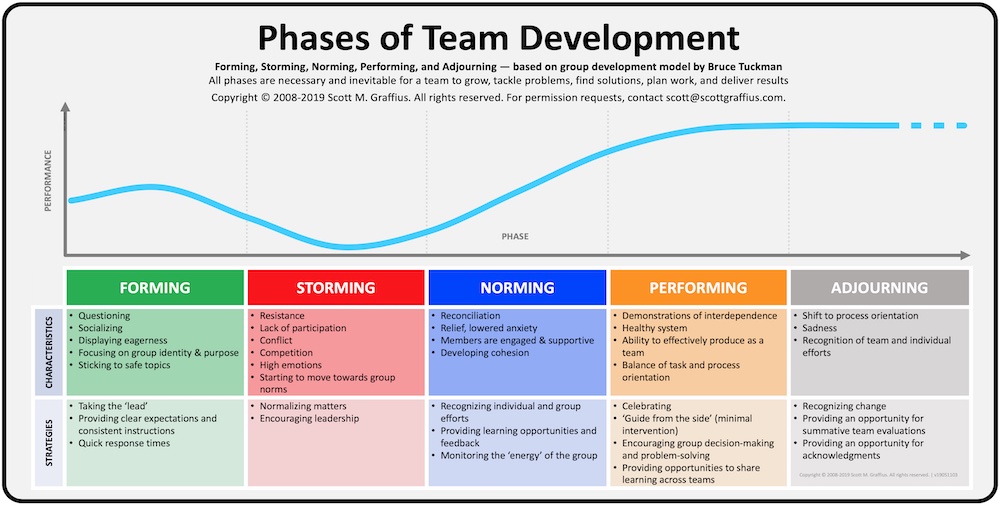 Use Tuckman S Model Of Team Dynamics Agile Scrum Guide Book Blog
Use Tuckman S Model Of Team Dynamics Agile Scrum Guide Book Blog
During this stage group members may be anxious and adopt wait-and-see attitude.
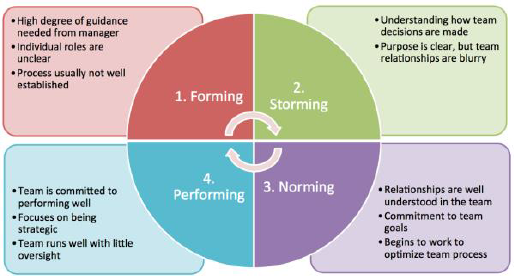
Two models of team development. Understanding that developmental stage. Team development stages As a way to improve teamwork and help companies become more efficient researcher Bruce Wayne Tuckman published Tuckmans Stages in 1965. The changes Tuckman outlined in his study were the groups Forming Storming Norming and Performing.
The team members are very happy and everything seems to be going well. In 1965 Bruce Tuckman hypothesized that all developing groups undergo a linear progression. There are four more common models used to improve team performance which include Tuckmans Stage Model Hackmans Inputs-Processes-Outputs Model Lencionis Five Dysfunctions of a Team and Curphy and Hogans Rocket Model.
You can use Tuckmans model to help your team to perform better. Tuckmans Stages of Group Development proposed by psychologist Bruce Tuckman in 1965 1 is one of the most famous theories of team development. The Five Stages of Team Development About author.
Are 1 Forming 2 Storming 3 Norming 4 Performing and 5 Adjourning. According to this stages of group development model each group or team is likely to go through the following connected 5 stages during their joint work. The LaFasto and Larson Model In 2001 Frank LaFasto and Carl Larson developed a team effectiveness model they coined Five Dynamics of Team Work and Collaboration.
Similarities can be seen with other models such as Tannenbaum and Schmidt Continuum and especially with Hersey and Blanchards Situational Leadership model developed about the same time. The Cutting Edge Model. In doing so Tuckman reviewed 50 articles on group development and noticed that there were two features common to these small groups.
5 Stages of Group Development. From this he identified that groups evolved into teams via four common stages. Asad Khan Safi Program Manager with Organization of Human Welfare OHW Bs.
Team progress through the stages is shown in the following diagram. This is a group of people who are. New software modules are added in each iteration with no or little change in earlier added modules.
Forming storming norming and performing. Besides there is no sharing of authority or responsibility. The fact remains that in reality this is not really a team.
It describes four stages that teams may progress through. Team effectiveness is enhanced by a teams commitment to reflection and on-going evaluation. They will be formal towards each other.
The four stages of team development are. This is because there is one person who calls all the shots. There is team spirit in people.
Tuckmans five stages of team development include suggested actions to best support the team. Forming storming norming and performing a 5th stage was added later. Incremental and Iterative model The development process based on the Incremental model is split into several iterations Lego-style modular software design is required.
First identify the stage your team is at then use our tips to move them through the stages. A group of people comes together to accomplish a shared purpose. Team development creates a captivating atmosphere by encouraging co-operation teamwork interdependence and by building trust among team members.
The interpersonal or group structure and the task activity. The Forming Storming Norming Performing theory is an elegant and helpful explanation of team development and behaviour. Thus emerged a four-stage team development model Forming Storming Norming and Performing with a fifth stage Adjourning added in 1977.
Psychologist Bruce Tuckman described how teams move through stages known as forming storming norming and performing and adjourning or mourning. Forming storming norming performing and adjourning. Phil International development Study Iqra University Islamabad M.
Through researching 600 teams in various organisations they made a model of what an effective team looks like which consisted of five elements for team effectiveness. The development process can go either sequentially or in parallel. It talked about the four stages of development all teams move through over time.
The LaFasto and Larson Model Frank LaFasto and Carl Larson proposed another model of team effectiveness in 2001 which they refer to as the Five Dynamics of Team Work and Collaboration. Bruce Tuckman an educational psychologist identified a five-stage development process that most teams follow to become high performing. In addition to evaluating accomplishments in terms of meeting specific goals for teams to be high-performing it is essential for them to understand their development as a teamMost of us are familiar with the concept of the terrible twos in early childhood.
Politics International Relation International Islamic University Islamabad MA International Relation Abdul Wali Khan University Mardan M. These stages are universal to all teams despite the groups members purpose goal culture location demographics and so on. He called the stages.
The path-goal theory of leadership was developed by House Evans and Mitchell. Where tasks are mostly delegated and provided guidance.
Which Leadership Style Are You 3 Common Leadership Styles And What You Can Learn From Them Salesforce Blog
One more model of leadership is autocratic which is quite different from the above-noted models.
Three main types of leadership models. There are many types of leadership styles including autocratic democratic and laissez faire that are all effective under different circumstances. Internationalization and Change in information Technology though change in organisational diversity. Different types of leadership styles.
I feel it is a stretch of four Basic types of leadership. If the employee delivers a good performance results then a leader must reward him. Over time several core theories about leadership have emerged.
Unfortunately its often also one of the most underutilized styleslargely because it can be more time-intensive than other types of leadership. Designed as a practical tool for developing a persons leadership presence knowhow and skill it aims to summarize what leaders have to do not only to bring leadership to their group or organization but also to develop themselves technically and psychologically as leaders. He stated that the effectiveness of types of leadership styles was determined on three factors.
Despite the fact that such a model of leadership can lead to slow performance the results pay off. Some leaders are able to overlap styles and adapt them to best fit their company. Some of them are interchangeable but not everything can be used in anytime.
Of course each of them is more suitable in a certain context so you need some research before opting for one. The Authentic Leadership Model. The Authoritative Leader focuses on setting and achieving goals.
Leadership models arent styles of bossing people around or handing out orders. Six Emotional Leadership Styles Daniel Goleman Richard Boyatzis and Annie McKee detailed their Six Emotional Leadership Styles theory in their 2002 book Primal Leadership The theory highlights the strengths and weaknesses of six common styles Visionary Coaching Affiliative Democratic Pacesetting and Commanding. The Different Types of Leadership Models.
Three Styles of Leadership in Education Hierarchical Style of Leadership in Education. Judging from the situation people can adopt more leadership styles. 5 Leadership models that youll find on this article.
In this style of leadership a leader must assign certain tasks to the employees to perform. Within these categories specific leadership theories are recognized and described in detail. The Lewin Theory of Behavioral Leadership Kurt Lewins model of behavioral leadership argues that there are 3 types of leaders which include Autocratic Democratic and Laissez-Faire types of leaders.
Each of the 3 leadership models offer a different and complementary view of leadership. This way of being a leader can be used in various fields of activity both creative and routine. Leadership with Transactional Model.
Main points considering different leading organisations in US for the 21st century. Transformational leadership is the most effective style to use in most business situations. Scroll to top of page toggle menu.
There are a wide variety of leadership models for business application. The hierarchical style is based on the traditional method of education that lays more emphasis in a top-down approach in which all course of action is asserted and carried out with formal authority and has little scope for participatory analysis. For example Democratic Leadership team leadership facilitative leadership Laissez-faire Leadership is kind of same.
The coach leadership style is one of the most advantageous for employers as well as the employees they manage. Todays most dominant leadership model is situational transformational leadership model but these theories ignored behavioural approach. It is one of the finest and the most common leadership models that have been used by many people across the world.
It proposes that a persons motivation to complete any task was dependent on three factors. Autocratic leaders make decisions as dictators without discussing matters with their teams. The Three Levels of Leadership is a leadership model formulated in 2011 by James Scouller.
You may be a coaching leader if you. Lewyns leadership styles are authoritarian autocratic participative democratic and delegative laissez-faire. Each of these categories like contingency theories situational theories relationship theories and participative theories characterize leadership models based on how an individual leads his team.
The STAR model provides focus the style and focus model integrates focus with leadership style and the 5S Uncommon leadership model provides a wider perspective and sense of purpose to the leadership role. Leadership styles are classifications of how a person behaves while leading a group. Illustration by Joshua Seong Verywell.
These theories fall into four main categories. Power and influence theories. Developing the right mindset.
Kaufmans Five Levels of Evaluation. Moreover it bridges the gap between job requirement and employees present specification.
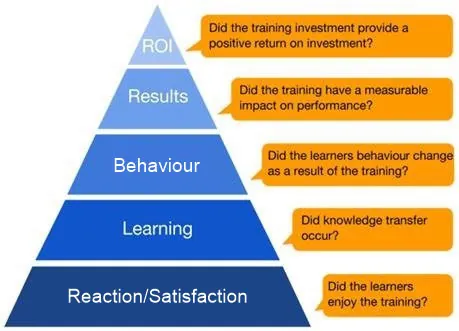 The Kirkpatrick S Evaluation Model Explained
The Kirkpatrick S Evaluation Model Explained
HarshitTopo in his research Evaluation of Training and Development.
Training and development evaluation models. In 1970 Peter Warr Michael Bird and Neil Rackham and published their book Evaluation of management training. The training evaluation helps them cut the costs and save a great deal of time which can then use for their business. Evaluation help to ensure that training help in meeting the competency gapsso evaluation should be considered as important aspect of training process.
The Phillips ROI Model. There are various reasons for that. VModels for Training Evaluation Different models of training evaluation are chalked by differend learned still concept of evaluation is considered as underdeveloped.
Very often participants have enjoyed a course even if they learned very little. Major question guiding this kind of evaluation is Is the program product or process achieving its objectives The Four-Level Model. By not measuring the impact of what we create and how much is applied on the job then we are.
Models of Training Employees. Some of these techniques are referred to as models or training evaluation methods and well use these terms interchangeably. Depends on training for its survival.
Kirkpatricks Model Of Learning Evaluation. But there are five techniques that are most often trusted by companies today. Reactions learning behavior and results.
While perhaps the most common design model there are a number of weaknesses to the ADDIE model which. Steps Transitional and Instructional System Development Model. This article provides a quick overview of 4 evaluation models youll find most useful.
Most training design models contain five steps. The Kirkpatrick Four-Level Training Evaluation Model is designed to objectively measure the effectiveness of training. Training and development enhances efficiency and develops a systematic way of performing duties and assigned tasks.
It focuses on four levels of training outcomes. Evaluation of Training and Development. Kirkpatricks Four-level Training Evaluation Model.
Questionnaires interviews group discussion or asking trainees to write a report can be used. Kirkpatricks model of learning evaluation has been used for more than 50 years. Training on the job training Evaluation Kirkpatrick model.
Analysis stands for needs analysis where the need for the training is studied. Design is the phase where the training program is. An Analysis of Various Models analysed training evaluation is the most important aspect of training and development.
It outlines four levels for evaluating learning or training. As well see it has provided the base for many other training evaluation models. Organizations in both the private and public sectors regardless of types or nature of organization agree that training and development is essential to the growth and development of the businessNoe 2002 Training is an essential human resource development HRD function of any organization.
However research conducted by Thalheimer indicates this model was first introduced by Raymond Katzell. Kirkpatrick Training Evaluation is a model created by Don Kirkpatrick. In summary the Kirkpatrick Model is the most common training evaluation model in use worldwide today.
This approach is most often used to evaluate training and development programs Kirkpatrick 1994. Training Evaluation Kirkpatricks Model of Training Evaluation Level 1 Reaction. Jane Hart director and editor of the Centre for Modern Workplace Learning recently wrote an article about a survey that she is conducting on the valued ways of Learning in the WorkforceHer results find that the formal activities offered by most LD organizations ie.
The CIPP model aims to link evaluation with the decision-making that goes into running a training course or program. There are different models of evaluting train-. The seminal model for LD evaluation first published in the 1950s by US academic Don Kirkpatrick remains influential today.
It offers a decision-centered approach to the evaluation of programs. Companies spend a lot of money for the training purposes of their employees and thats why it is necessary for them to understand the effectiveness of the Employees Training and Development Programs. The five phasesAnalysis Design Development Implementation and Evaluationrepresent a dynamic flexible guideline for building effective training and performance support tools.
Training is a transforming process that requires some input and in turn it produces output in the. Kirkpatrick Kaufman Anderson and Brinkerhoff. Training is a sub-system of the organization because the departments such as marketing sales HR production finance etc.
Which today is regarded as one of the main models of evaluating training. The ADDIE model is the generic process traditionally used by instructional designers and training developers. Care must be taken with all of these methods.
It is a subject which has been much discussed but superficially carried out. One of the most commonly used models is the ADDIE model which stands for analysis design development implementation and evaluation. As learning and development professionals we pride ourselves on our ability to create effective training.
E-learning conferences classroom training are actually considered the least valuable to learners development. An Analysis of Various Models Harshit Topno Abstract. The four levels are.
The model was created by Donald Kirkpatrick in 1959 with several revisions made since. Their framework for evaluating training became known as the CIRO model and offers businesses a way of evaluating training needs and results. This article reviewed employee training and development as a model for organizational performance and effectiveness.
The CIPP model was later expanded to include Sustainability Effectiveness and Transportability.
Get the printable Learning Theories Study Flashcards. For example several contemporary studies support a model of development that is more continuous than Piagets discrete stages Courage.
The Five Major Theories Of How People Learn A Synopsis The Bumble Bee
5 Principles and 5 Theories for Effective Training Design I once asked the director of a company with more than 10000 employees what he saw as the end goal of his organizations corporate training.

Training and development theories and models. Design is the phase where the training program is outlined and planned. Learning Theories Printable Study Flashcards. Color coded by category ready for double-sized printing.
This movement attempted to adapt scientific models and to applythem to the learning process. Reinforcement Theory The reinforcement theory emphasizes that people are motivated to perform or avoid certain behaviors because of past outcomes that have resulted from those behaviors. Training and development are also considered as continuous improving process that should be up to date to face the dynamic changes in workplace and to adopt training as a competitive advantage of.
Training may be viewed as related to immediate changes in organizational effectiveness via organized instruction while development is related to the progress of longer-term organizational and employee goals. The ADDIE model was first designed in the 1975 by the US. In behaviourist theory learning is a mechanical process of habit formation by means of frequent reinforcement of a stimuli - response sequence this can be thought of as conditioning.
As with other major contributors of theories of development several of Piagets ideas have been challenged by later research. The first learning theory to be researched in the 19XXX based on the work of Pavlov and Skinner is known as the behaviourist theory. Training and development involves improving the effectiveness of organizations and the individuals and teams within them.
Theory of Reinforcement This theory emphasizes on the learning behavior of a person and suggests that the learner will repeat that behavior which is attached with a positive outcome or result. Want a fast way to memorize and study learning theories. 122 Development of Teachers Personal Theories of Learning Teachers instructors lecturers counselors etc.
Major theories of training and development are reinforcement social learning goal theory need theory expectancy adult learning and information processing theory. There are so many theories models that are used for management customer service and sales courses. There are many theories principles and models of communication amongst which are Piaget Vygotsky and non-verbal.
Skinner an economist of behaviorist school of thought proposed the theory of reinforcement and suggested that the training and development programs should be aligned with the organizational objectives and a positive outcome. Are known to have undergone some training based on certain principles models or theories. Training and development enhances efficiency and develops a systematic way of performing duties and assigned tasks.
It is comprised of the five factors listed above which helps Instructional Design professionals tackle eLearning projects in stages. Jane Hart director and editor of the Centre for Modern Workplace Learning recently wrote an article about a survey that she is conducting on the valued ways of Learning in the WorkforceHer results find that the formal activities offered by most LD organizations ie. A discussion of four major theories of training and development is given below.
Moreover it bridges the gap between job requirement and employees present specification. Adherents of this new philosophy espoused the beliefthat learning could be carried out with the same discipline and precision used inscience and that this would result in more consistent. These plans are referred to as instructional systems design ISD models.
Most training design models contain five steps. Training like any other organizational activity requires time energy and money. Is there a glossary of them with a brief explanation of each.
Piaget Piaget focuses on cognitive development which entails certain changes which take place in human beings between conception and death. Theories of training SECTION THREE Theories of training. A learning training and development framework in which theories and concepts may be viewed in detail using an interactive mind map and topic list.
Otherwise I will have to continue making a note of them as and when I come across them. One of the most commonly used models is the ADDIE model which stands for analysis design development implementation and evaluation. These are the materials and resources with which they are built to become who they are.
Once the designer has taken that critical first step instructional design models and learning theories enter the picture to provide a systematic approach or plan for crafting effective and efficient training solutions that meet organizational and individual needs. E-learning conferences classroom training are actually considered the least valuable to learners development. Analysis stands for needs analysis where the need for the training is studied.
A set of 80 learning theories and models cards. ADDIE tackles eLearning development rather than learning behaviors. Approximately 9 cards per printable sheet 18 sheets front and back.
Army by the Centre for Educational Technology at Florida State University.
There are several THEORIES AND MODELS 9 Figure 13 Communication in five categories Communication category Example of communication medium Intrapersonal Internal communication for example what we. He received his PhD from Clark University and in l964 commenced an extended career of teaching and research at the University of California Los Angeles.
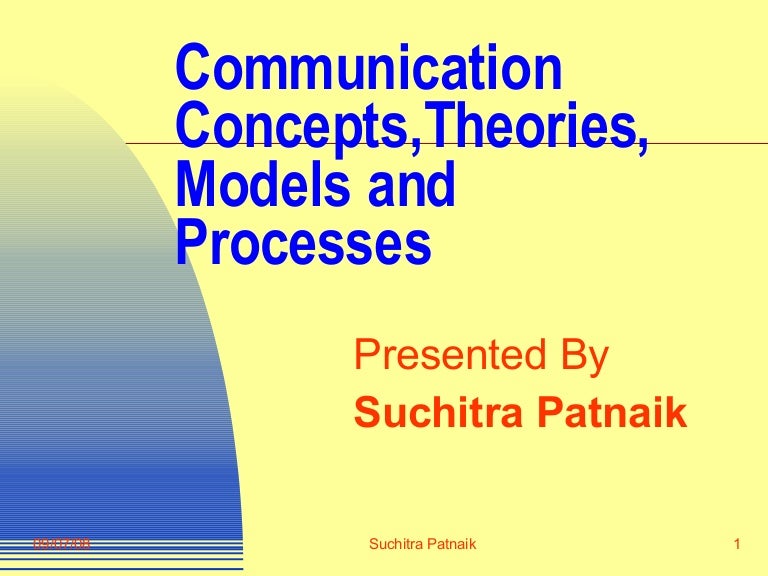 Communication Concepts Theories And Models1
Communication Concepts Theories And Models1
Intercultural Non-Verbal Communication and the Contested Theory of Universality The following literature review will draw from the currently available body of communications research to summarize the accepted principles and scholarly findings of the six most studied interpersonal non-verbal communication modes including physical appearance proxemics gesturing eye contact.
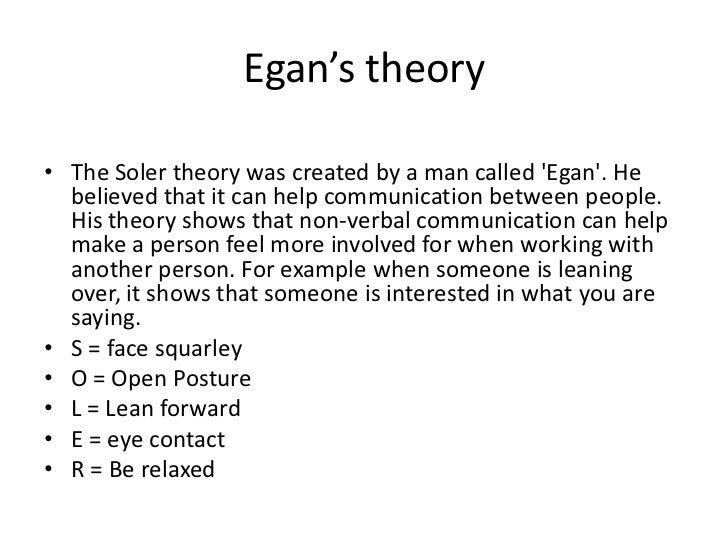
Non verbal communication theories and models. Communication ConceptsTheories Models and Processes Presented By Suchitra Patnaik. This was the culmination of two pioneering studies conducted in 1967. Although your model is correct for non verbal communications as a whole it does not take into consideration the merging of auditory and visual communication from a non visual perspective.
The proposed model advances the SOLER model by including the use of touch and the importance of individual intuition is emphasised. In nonverbal communication the use of body language is essential where effectiveness in this type of communication depends on the users understanding. Illustrators - depict verbal message 3.
Everyday social skills the verbal-non-verbal system of conversation and telephone skills are acquired in this way. Emblems - precise meaning 2. Instead of written or oral words it relies on various non-verbal cues like physical movements tasks colors signs symbols signals charts etc.
In the context of the observed event verbal and nonverbal communication paralanguage noise psychological and physical attribution errors body movements emblems illustrators affect displays and regulators are the communication theories that will be examined to show how they all combine to give more meaning to messages. The first acronym SOLER stands for. Albert Mehrabian studied the effects of conflicting messages.
The influence of non-verbal communication is stronger than was first assumed. What is Nonverbal Communication. Key theories The 7-38-55 communication rule.
To express feelings attitudes or information. Affect displays - presentation of feelings and emotions-- Ekman Friesen Unmasking the Face 1975. To get a better understanding of communication professor of psychology Albert Mehrabian studied the importance of non-verbal communication in the 1970s.
It is almost impossible not to communicate. There are two commonly used communication models in the health and social care environment known as SOLER and SURETY. Although no word is used in non-verbal communication it can effectively communicate many human.
Nonverbal communication refers to the process in which information is transferred and interpreted without the direct use of words. In other words if a person is not able to see the person they are communicating with they are not necessary at a disadvantage. Non-verbal communication occurs without using any oral or written word.
The model encourages student nurse educators to also think about therapeutic space when they teach skills of non-verbal communication. Of models and trial and error helped by verbal feedback from family and friends. -Non- verbal codes can either be digital or analogic.
This essay analyzes non-verbal communication by looking at the use of body language as well as the actual communication using communication theories basing on observations made. It includes all aspects of a message besides the verbal component. Non-verbal codes tend to be analogic rather than digital.
Ekman and Friesen assert that all nonverbal behavior is one of five types. S - face the client squarely. Individual variations in NVC may be due to imitating deviate models lack of experience or experi-ence in a different culture or sub-culture.
On the other hand it is known to be continuous for analogic signals because it forms a spectrum of range just as like in volumes of sound and the brightness of the light. Instead they generate a series of ideas for a theory-led intervention to adopt. Adapters - facilitate release of bodily tension 4.
Communication Models and Theories Wilbur Schramms Modifications. Included the social environment in the model noting that it will influence the frame of reference of both Communicator A and B. The dyadic interpersonal communication model highlights the importance of clarity and awareness for the many factors that can affect verbal and nonverbal communication.
Added to the model the context of the relationship and how that relationship will affect Communicator A and Communicator B. The aim to aid practioners in their non-verbal communication. I have an assignment to classify the Mass Communication theories under Testing Modification Reformation and Revision.
Theories do not specifically identify an intervention to follow. Communication Concepts Theories And Models1 1. Regulators - control or coordinate interaction 5.
Mehrabian developed a key interest in the role of nonverbal communication and its impact during face-to-face exchanges in the 1960s where he developed the often used and misunderstood 7-38-55 rule. Discrete like numbers and letters are under digital signals. Link Cj Riker December 24 2020 320 pm.
A number of other theories in communication and specifically in nursing communication have been used in health care. Verbal Non-Verbal Body Language Professor Albert Mehrabian has pioneered the understanding of communications since the 1960s.